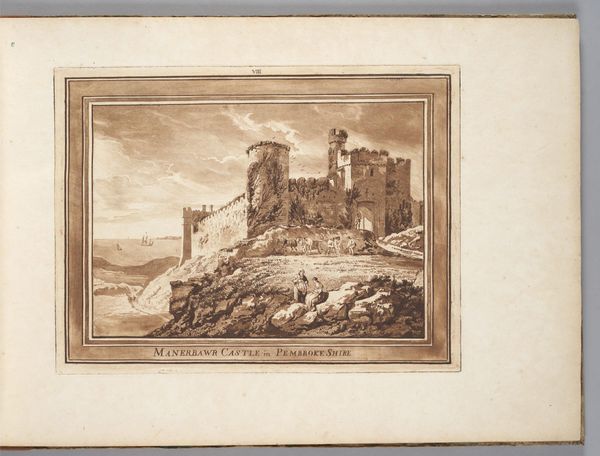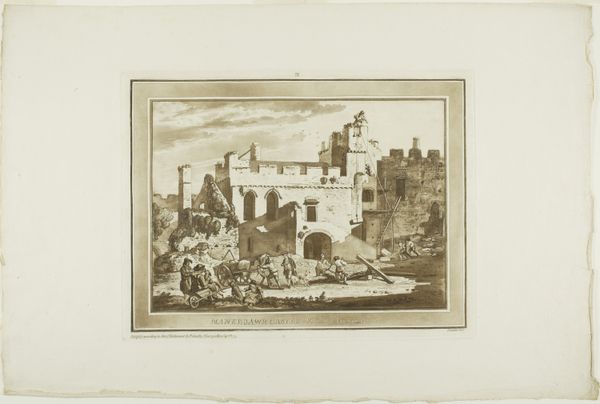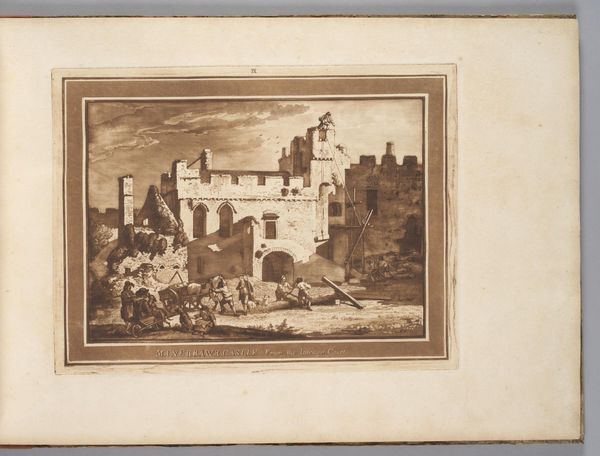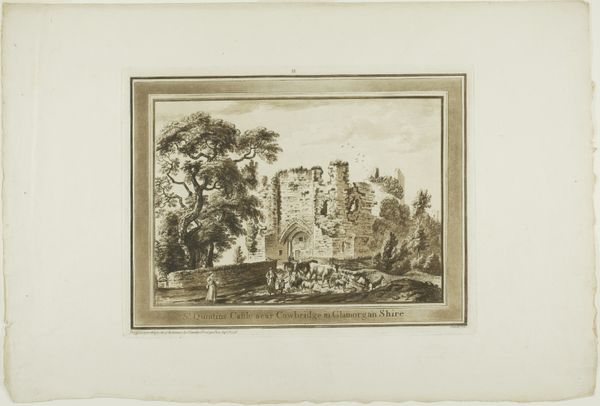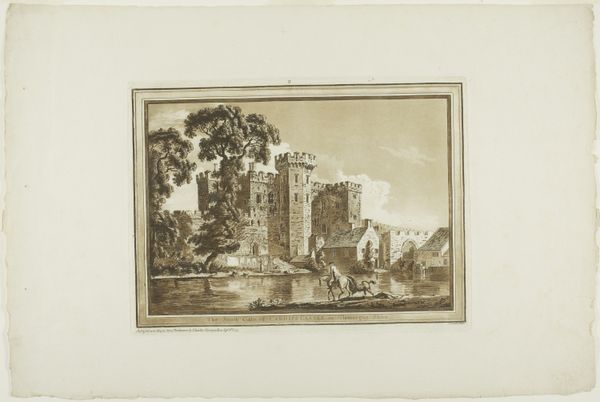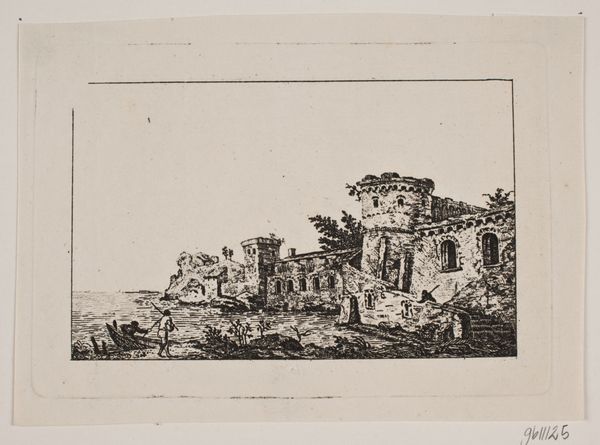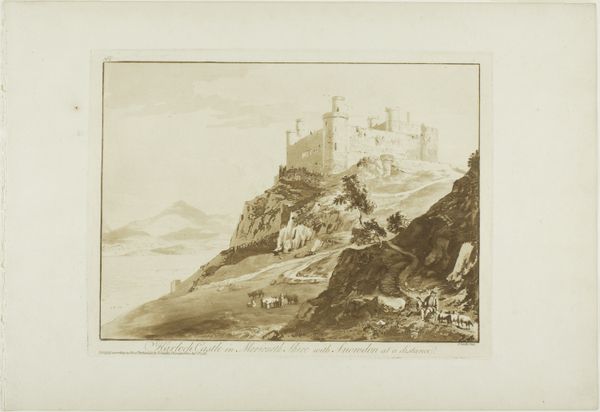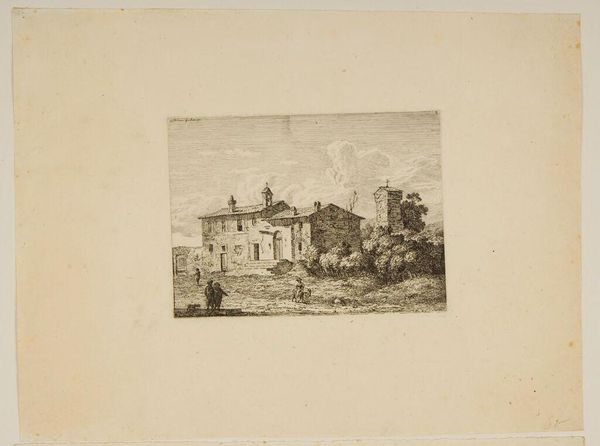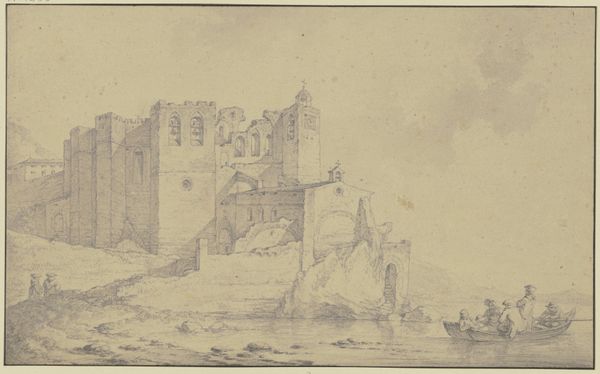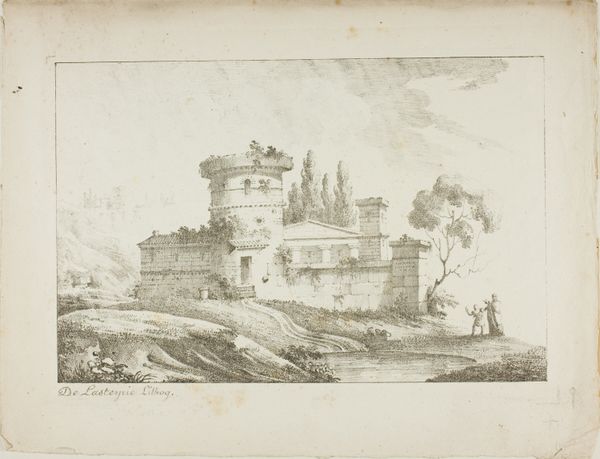
Manerbawr Castle in Pembroke Shire, from Twelve Views in Aquatinta from Drawings taken on the Spot in South Wales 1773 - 1775
0:00
0:00
Dimensions: 183 × 257 mm (image); 238 × 314 mm (plate); 358 × 527 mm (sheet)
Copyright: Public Domain
This is Manerbawr Castle in Pembroke Shire, made by Paul Sandby using aquatint, a printmaking technique, in the late 18th century. Aquatint simulates the effect of watercolor washes, using acid to etch a grainy pattern on a metal plate. When printed, this creates subtle gradations of tone. Sandby, a skilled draughtsman, has used this to capture the play of light on the castle ruins, conjuring a picturesque scene. The aquatint process itself involved skilled labor. From preparing the copper plate to multiple stages of etching and printing, each impression would have been carefully crafted. This print is one of twelve views of South Wales, suggesting a market for images of the British landscape at the time. By focusing on the craft of aquatint, we can appreciate Sandby's technical skill and understand how prints like these contributed to a broader visual culture, shaping perceptions of landscape and national identity. It reminds us that even seemingly straightforward landscape views are the result of intricate artistic processes, labor, and social context.
Comments
No comments
Be the first to comment and join the conversation on the ultimate creative platform.
